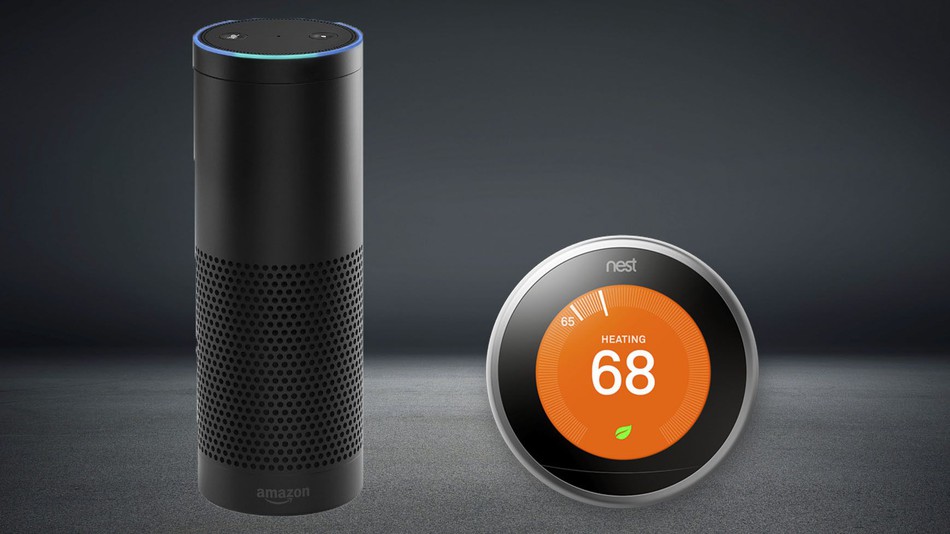Maybe you went over to someone’s house recently, saw a smart product in action, and decided you can’t live without it. Or maybe you read about how some smart products are extremely energy-efficient, and you want to know how much they might reduce your bills.
The smart products market has become so vast that it’s not wise to buy without doing some research first. There are factors to weigh and characteristics to be aware of before taking the plunge. Read on to learn how to make smart decisions about smart products.

A buying guide to purchasing smart products
1. Consider the initial price, plus money or time saved
When you’re surveying the market for a smart device, don’t consider only the upfront cost; add in costs for accessories, replacement parts, and other necessities into the equation.
 When you read reviews about the products that catch your interest, aim to get rundowns from people who have owned the items for a while. They’re the most likely sources to give you a genuine glimpse of the money you could save through long-term ownership.
When you read reviews about the products that catch your interest, aim to get rundowns from people who have owned the items for a while. They’re the most likely sources to give you a genuine glimpse of the money you could save through long-term ownership.
In some cases, a smart product won’t save you money, but it stops you from wasting so much time. If you hear a lot of feedback saying that people get more done by using a smart product that recognizes voice commands, for example, you might realize that a product that performs as well as people say is certainly worth whatever it costs.
Don’t let a steep upfront price immediately convince you to look elsewhere. Instead, think about the benefits you could receive as time passes by owning that product. Conversely, also examine whether you might spend more time learning to use a smart product than actually reaping its rewards.
2. Pay Attention to Popular Products
The most prominent merchandise in the smart products market has usually achieved that position for a reason. People buy something, try it, love it and encourage friends to follow suit. The most well-known brands typically also have a stronghold in the market and spend time making product improvements.

Recent statistics indicate that as of this September, Amazon sold three times as many of its smart products than Google had. Google and Amazon are two mega brands, so why is Amazon winning in this case? It has existed in the smart home marketplace longer than Google and often sells its Echo, Dot and similar products at low prices. However, you can rest assured Google has invested technology into understanding what consumers want, too.
If you make sure to include well-known manufacturers in your research instead of just focusing on up-and-coming names, you’ll see what’s available from brands that have excellent resources and access to the marketplace. It’s not necessary to steer clear from smaller brands altogether, but you should realize that by potentially buying a smart product from one of them, you might be aligning with a name that’s untested compared to the more popular companies.
3. Decide what you want to achieve
Once you nail down at least a few reasons for buying smart products, it’ll be easier to avoid buyer’s remorse. The possibilities are almost limitless when it comes to the kinds of smart products you could buy.
There are the more common options, such as thermostats, lights, and speakers. All of those could make life easier by preventing you from moving around the house so much. Plus, smart thermostats save $180 per year on average for the households that use them, so if it’s cost-effectiveness you’re after, look for similar research that indicates why a particular product could keep your expenses down.

And then there’s the “wow” factor to consider. For example, Jim Beam came up with a smart decanter that can pour your whiskey. Compared to the other products mentioned above, this is not a purchase that will save you money or time — but it will definitely impress your friends.

Focus your smart-buying efforts by determining your smart product goals. Are you trying to cut down on boring tasks, turn your home into a more comfortable place or simply make people say “Wow!” when they walk into the room and see what you own? When answering these questions, get input from other household members, too. You might find they have unmet needs you hadn’t considered yet.
When you answer those questions, it’ll be easier to understand which features should be among your most-wanted capabilities. If you hate dealing with tech learning curves, you probably want a smart home product that’s extremely user-friendly. On the other hand, you might not mind a more in-depth and complex product if it can do all or most of the things you need at once.
Bear in mind that some features available on smart home products might seem a little gimmicky. You might also pass a judgment that they’re more trouble than their worth after hearing how numerous people mentioned the features didn’t work properly when they wrote their reviews. However, if a big reason why you want a smart product is for the bragging rights, it probably won’t matter to you that a company hasn’t perfected a feature, as long as it exists.
4. Check out the offerings from retail stores
Buying your smart product online may seem like the most convenient option — unless you have trouble setting it up or making it work. A study from Parks Associates found there will be 10 million smart products sold by 2021, and most of them from retail stores rather than websites. Even Amazon ships some of its smart products to physical stores.
It knows some people prefer to see and touch the items in person before buying them. Plus, if difficulties arise along the way, individuals can get professional insight from the store instead of solely seeking help on the phone and through the mail.
After making a shortlist of smart home items you’re excited to possibly own, see if retailers in your area have them in stock. If you find at least a few that do, go to those outlets and see if the demonstration models of the products match or exceed your expectations. During those evaluation outings, you’ll probably notice some unexpected characteristics that result in positive or negative impressions.

The 5 best smartphones for under $200
Find out now5. Be realistic
A smart product might be the coolest thing you buy for a while, but it might not drastically change your life. The specifics vary depending on the type of innovation you get but expect it to enhance the way you live, not completely alter it. Most smart products simplify life by doing some of your typical tasks for you. They might also learn how you behave, then adapt accordingly.
If you’re having trouble envisioning how a smart product will improve your life, spend several hours with a trustworthy friend who owns at least one of them. Watch how that person interacts with the gadget or multiple devices, then imagine whether you’d find those same commands useful.
By keeping these tips in mind, you can discover smart products that fit your lifestyle and needs and don’t make you feel like you’ve wasted money.
Taking your time with the research process is important because it’ll help you avoid impulse buys. Also, realize that the smart home market is a rapidly evolving industry. If you don’t see an item that matches your requirements, developers might be in the middle of engineering something that does.

